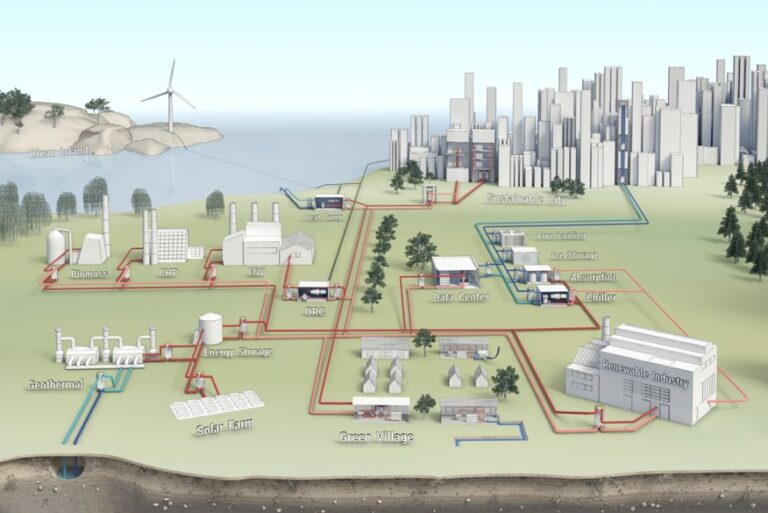Expanding on LEED and its impact on the green building industry, the U.S. Green Building Council (USGBC) now offers the LEED Volume Program, geared specifically toward large users of LEED looking to green their building portfolios in an efficient, cost-effective manner. The LEED Volume Program, now available for both Operations & Maintenance and Design & Construction tracks, streamlines the certification process for high-volume property owners and managers of existing buildings and new construction projects. It works by establishing a quality management approach applicable to multiple projects using a conceptual prototype to achieve LEED certification for the entire group of projects without compromising LEED’s rigorous standards.
Utilizing this prototype-based approach, the program enables large-scale builders, owners and managers to achieve consistency in green building improvements, earning LEED certification faster and at a lower cost than would be possible with individual building reviews. Nineteen participating organizations have certified more than 625 LEED projects with the LEED Volume Program, including Bentall Kennedy, Cushman and Wakefield, Starwood Hotels & Resorts, PNC Bank, Best Buy, Marriott, Citigroup and Starbucks Coffee Company.
The benefits of the LEED Volume Program stem from its large-scale application across an organizations building portfolio. Participants benefit from achieving economies of scale to reduce costs through common approaches to building design, retrofits, and management. Project certification is streamlined using an audit process. LEED Volume certification uses alternative review methods, and encourages a robust education program wherein LEED is incorporated into standard practices, procedures and tracking processes across the organization.
At the core of the LEED Volume Program is the LEED prototype. The prototype is a conceptual building or framework that represents a group of projects that have either major design and construction elements in common or a standard set of strategies, quality control measures and tools, along with like management procedures. Therefore, they can be certified according to a common set of LEED prototype credits. Each prototype must be based on a specific version of one of the eligible LEED rating systems. Design & Construction volume certification is available for LEED for New Construction and Major Renovations, LEED for Commercial Interiors, LEED for Retail: New Construction, and LEED for Retail: Commercial Interiors. Operations & Maintenance volume certification includes LEED for Existing Buildings: Operations & Maintenance.
A volume participant is welcome to have more than one prototype, each representing a different group of projects with common features. The LEED Volume Program participant identifies a set of prototype credits for each prototype, which are LEED prerequisites and credits with technical approaches or outcomes across a group of projects. Some buildings within the participants portfolio may lack the needed uniformity to meet prototype criteria, and thus can be certified as individual projects through the standard LEED review process.
The three-step process to complete volume certification begins with program admission. Potential participants must complete an application and submit supporting documentation, detailing the applicant organization as well as the groups of projects seeking volume certification. Once accepted, Volume participants complete an orientation program that includes webinar participation, guidance documents, and a one-day, in-person training session.
Secondly, prototype precertification is completed. This is a comprehensive review, administered by GBCI (Green Building Certification Institute), which looks at the standard building features or practices, as well as control measures that will be implemented on the volume projects under the prototype. The prototype is conceptual and not based on a real structure or space, but should be representative of the projects that will adhere to it. At a minimum, the prototype must include all LEED prerequisites and enough credits to achieve LEED certification, with technical documentation, at the LEED Certified level or higher.
One of the elements of the prototype precertification submittals that differentiates and enhances the LEED Volume Program is the education plan. Through this plan, the LEED Volume Program encourages organizational change to ensure practices are standardized for staff, consultants and contractors. The education plan must consist of training materials that outline roles and responsibilities, provide technical green building information, and indicate how green building concepts are conveyed to team members. This provides an opportunity for professional development across the organization.
The third and final step in the LEED Volume Program process is certification. For Design & Construction projects, construction may begin upon precertification of the prototype. Operations & Maintenance projects must undergo a three-month performance period after prototype precertification. For each project, a LEED scorecard is submitted that indicates which prototype credits were achieved to qualify the project for certification. To ensure compliance with LEED certification, volume projects are audited selectively, according to the total number of projects purchased by a specific organization. As the number of volume projects purchased under a prototype increases, the audit rate drops (to as low as 5 percent).
The LEED Volume Program for Design and Construction, introduced at USGBCs Greenbuild International Conference & Expo in November 2010, offers a streamlined certification approach for organizations planning at least 25 ground-up or interior construction projects. Because of their prototypical approach to building and an ongoing commitment to expansion, retailers and hoteliers are particularly well suited for this branch of the LEED Volume Program.
The LEED Volume Program for Operations and Maintenance is the recently launched addition to the Volume Program. It offers a streamlined approach for organizations pursuing certification of at least 25 projects for existing buildings. The program focuses on consistent policies and management practices and centralized data management in green building operations. It is compatible with a range of market sectors including commercial office, hospitality, retail, government, and higher education.
The LEED Volume Program presents organizations, companies, governments and campuses a way to revamp their existing buildings or design new buildings in a streamlined, cost-effective and business-savvy manner. The program dramatically increases the efficiency of LEED certification and lowers the associated costs, making green building accessible across an organizations entire portfolio.




